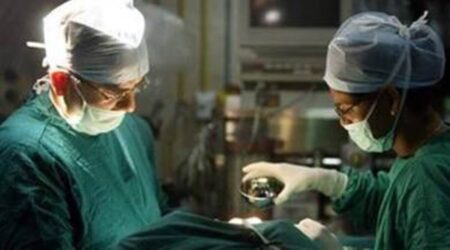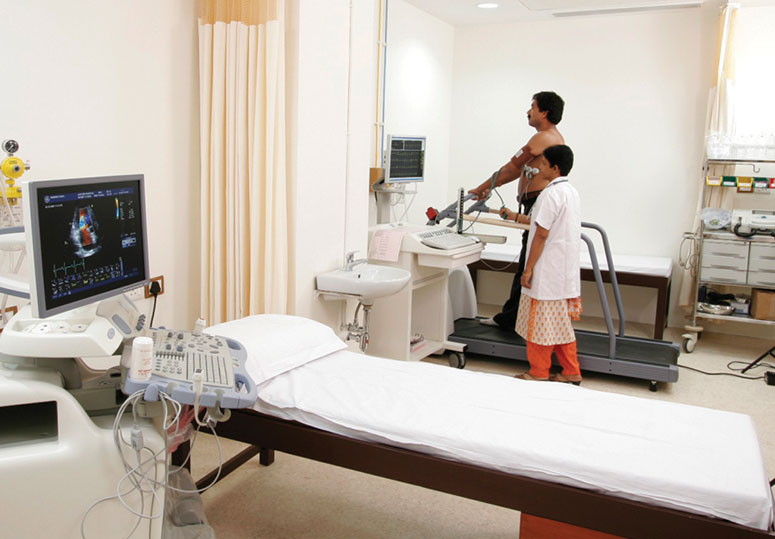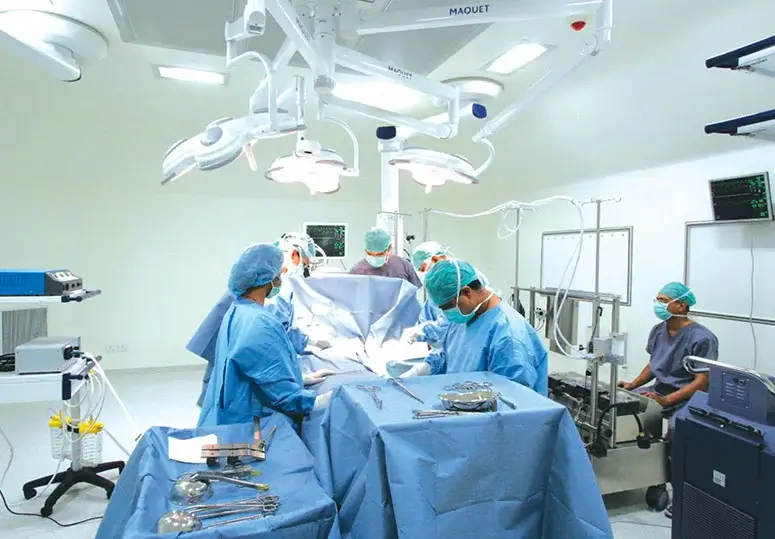Robotic Knee Replacement in Pune
Robotic Precision for Pain-Free Knees: Robotic Knee Replacement at Jupiter Hospital
Jupiter Hospital is at the forefront of providing advanced robotic knee replacement treatment in Pune. Employing the second-generation CORI system, this innovative method integrates 3D imaging guidance and robotic arms, meticulously controlled by our skilled experts through a specialized console.
The procedure involves reconstruction using virtual patient anatomy, ensuring not just accelerated rehabilitation but also an ideal range of motion, facilitating a smooth reintegration into daily routines. The benefits of robotic-assisted knee surgery are diverse, encompassing detailed surgical planning, heightened precision, minimized incisions, expanded ligament-sparing options, precise implant fitting, improved positioning, and superior soft-tissue balancing.
The exceptional skills of our surgeons enhance the robotic precession, maximizing advantages for patients undergoing the operation. In the initial stages, when patients with knee issues visit the Orthopedic surgeon's OPD, our consultants evaluate the severity of the condition. Conservative treatments like anti-inflammatory medications, weight management, cortisone shots, and knee braces may be suggested. However, if symptoms persist, joint replacement surgery is considered, following diagnostic tests like X-rays and CT scans.
The surgical process, led by our well-trained joint replacement surgeons, involves preliminary investigations, including laboratory tests. Patients typically stay in the hospital for 3 to 4 days, following the doctor's guidance. Post-surgery, rehabilitation starts promptly, with physiotherapists guiding patients in taking small steps with support. Specific exercises are prescribed to achieve a near-normal gait pattern and maximize range of motion. Emphasizing continued exercises post-discharge, periodic follow-ups ensure a thorough and effective recovery. Experience a transformative treatment journey by choosing our robotic knee replacement hospital in Pune.
Team
Looking for the Robotic Knee Replacement in Pune
Arthritis, characterized by joint swelling and tenderness, manifests through symptoms like joint pain, stiffness, and reduced range of motion, often worsening with age. The two most prevalent types are osteoarthritis and rheumatoid arthritis.
The management of arthritis focuses on pain control, minimizing joint damage, and enhancing or maintaining functionality and quality of life. Various medications and lifestyle adjustments contribute to achieving these goals, tailored to the severity of the condition, ranging from anti-inflammatory medications to Total Joint Replacement Surgeries.
Total/Unicondylar Knee Replacement is an orthopedic procedure restoring pain-free movement by replacing damaged knee joints with prosthetic components.Typically recommended for cases of severe joint damage where the joint is extensively worn out, accompanied by progressive pain and diminished mobility, the procedure seeks to alleviate pain, enhance mobility, and restore overall function.
The success of knee replacement hinges on critical factors such as leg alignment, implant position, and fit. Modern implants, now available, boast a lifespan of up to 30 years. For comprehensive arthritis management and advanced Total/Unicondylar Knee Replacement procedures, consider Jupiter Hospital, a renowned facility specializing in Robotic Knee Replacement treatment in Pune .
In joint replacement surgery, success depends on getting things just right—the implant, joint alignment, and balancing the ligaments. The robot shares details about the joint's shape, ligaments, and balance, helping pick the right-sized implant tailored to the joint. These steps ensure that the surgery is successful.
The robotic arm guides the surgery path accurately and stops if there's even a tiny detour. Before surgery, a CT scan plots a 3D model of the patient's knee. This helps surgeons place the implant exactly right. During surgery, the robotic arm uses this 3D model to help plot a safe path for surgeons, preventing harm to nearby tissue. This careful process ensures that robotic surgery achieves the needed alignment and balance, making the surgery accurate and predictable.
- Alleviation of Pain: Robotic-Assisted Surgery reduces inflammation caused by foreign bodies, leading to diminished pain and decreased reliance on painkillers. This approach keeps patients less medicated, contributing to a more alert feeling.
- Native Bone Preservation: In Robotic arm-assisted surgery, the use of a probe eliminates the need for saws or blades, minimizing blood loss and disturbance to the native bone. This preservation strategy significantly benefits patients during the procedure.
- Speedy Recovery: Smaller incisions and enhanced surgical precision in Robotic-Assisted surgeries result in minimal disturbance to bone and tissue, expediting the body's natural healing process. This translates to a quicker recovery for the patient.
- Natural Post-Surgery Sensation: Robotic techniques facilitate the selection of implants based on the patient's specific anatomy, enhancing accuracy. This precise implant placement contributes to a more natural post-surgery feeling, reducing joint awareness in daily activities.
- Radiation-Free Procedure: Equipped with advanced software, the Robotic arm provides image-free, smart mapping, enabling real-time characterization of bone and cartilage without the need for frequent preoperative imaging. This eliminates the necessity for extra radiation, such as CT scans or X-rays before and after surgery, ensuring a hassle-free procedure for patients.
- Progress in Unicondylar Knee Replacement: Traditionally met with skepticism due to higher failure rates, unicondylar knee replacements have undergone a transformation with robotic technology. This advancement has significantly improved the success and predictability of unicondylar knee replacement, instilling confidence in surgeons to offer this option to their patients.
Jupiter Hospital takes pride in introducing the CORI robotic knee replacement system, signifying a groundbreaking stride in orthopedic innovation. This second-generation system, distinguished by Real Intelligence, serves as a highly efficient handheld robotic solution poised to revolutionize orthopedic procedures.
The intelligent platform supporting this system seamlessly integrates robotics, software, smart tools, and data, offering a multitude of advantages:
- Image-Free, Smart Mapping: Dispensing with the need for CT/MRI scans, the system provides real-time characterization of bone and cartilage through landmark collection and point mapping, eliminating the requirement for preoperative imaging.
- Real-Time Planning and Gap Assessment: Offering a 3D model of patient anatomy, the system optimizes alignment and balance through surgeon-controlled, handheld intelligence, reducing the need for extensive ligament releases.
- Enhanced Robotic Knee Workflow: Tailored to save time in the operating room, the portable robotics feature boasts the smallest footprint in orthopedics, streamlining procedures.
- Patient-Specific Planning: Enabling visualization of cuts and gap balancing before bone preparation, the system aids in eliminating extensive ligament releases. Customizable plans based on mechanical alignment and ligament data are devised for each patient.
- Robotics-Assisted Bone Preparation: Utilizing a handheld milling technique with two control modes (exposure and speed control), the system automatically adjusts to execute patient-specific plans, enhancing efficiency in bone preparation.
- Redesigned Robotic Handpiece: Featuring improved ergonomics for enhanced usability, the redesigned robotic handpiece ensures a comfortable and precise surgical experience.
- New Bur Designs: Delivering 2X cutting volumes, resulting in a 29% faster resection, the system allows for more efficient bone preparation.
- Advanced Tracking System: Tailored for robotic surgery, the advanced tracking system boasts a 458% faster refresh rate, enhancing precision during procedures.
- Customizable Surgeon-Controlled Planning: Facilitating size, orientation, and alignment of components virtually on a 3D model, the system allows the surgeon to confirm implant placement relative to the articulating surface and make adjustments for soft-tissue balance throughout the full range of motion (UKR only).
Embark on the future of orthopedics with Jupiter Hospital's robotic technology, promising unparalleled precision and efficiency in knee replacement procedures.
Patients Speak
Hear the heartwarming stories of patients overcoming difficult afflictions
















 View Map
View Map Book an Appointment
Book an Appointment Find a Doctor
Find a Doctor Health Check-up
Health Check-up

















 Find a Doctor
Find a Doctor Health Checkup
Health Checkup Book an Appointment
Book an Appointment